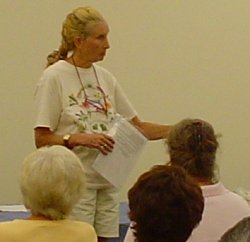Additional information about bruises - Page 2
There are a number of things which may help you speed up your recovery from bruises. Look at some of these steps and also the data in the related articles.
Arnica treatment for bruises
 Arnica has long been valued as a folk remedy for bruises and sprains. It has great pain-relieving, antiseptic and anti-inflammatory properties. Although widely used in forms of pills, creams and tinctures, it is best utilised when rubbed onto the skin.
Arnica has long been valued as a folk remedy for bruises and sprains. It has great pain-relieving, antiseptic and anti-inflammatory properties. Although widely used in forms of pills, creams and tinctures, it is best utilised when rubbed onto the skin.
It is surprising just how much the right arnica cream can speed up recovery, provided it is applied within a few hours. If a child bumps their knee or head etc. by putting on the cream it should definitely make an improvement within a day or two. You just have to make sure you get a good cream with a decent amount of arnica in it. If you find a particular cream doesn't seem to have much effect, then buy another brand ready for when the next bruise occurs! Find the right brand and you will see the difference.
If you can find it, try adding 10 to 15 drops of arnica tincture to a cup of water, soak a clean cloth and then apply it as part of the bandaging. The body should absorb it through the skin and go to work quickly. Alternatively, you could make your own liniment*.
(*liniment: a warming rub, often made by mixing tinctures with olive, coconut oil or a herbal infused oil. )
Parsley and Witch Hazel
Parsley is a common garden herb, rich in vitamins and therapeutic properties. Parsley has the ability to shrink small blood vessels and is helpful in treating piles, broken or thread veins and bruising. Crush a handful of parsley and apply it to the bruised area. Repeat regularly with the fresh herb and the leaves will clear up the black-and-blue marks in a few days.
Witch Hazel is a flowering bush most commonly found in America, but now grows quite happily in many countries. It is often found in gardens and parks. The bark and leaves of the plant are the main things that are used to make products, and it is commonly used to help with a number of skins problems.
When it's used on a bruise, you would bathe the area (externally) with Witch Hazel liquid or cream. This helps to disperse the blood and encourages healing. Witch hazel helps to reduce swelling in an area, and can also act as a kind of antiseptic.
For all of these external treatments, you can add-in some very mild massage. This should be done extremely gently with just one finger. You are simply trying to stimulate the blood flow a little. Do not massage deeply into the tissues. It is almost as if you are putting your attention on the injured area and getting back into communication with the damaged area.
Reduce the Swelling as this speeds up recovery
Why does swelling occur? There are a number of reasons...Firstly, what happens in the area is that there has been some trauma and damage to the small blood vessels and capillaries. This can cause the blood to seep out into the tissues and between cell walls etc. This can make up the various colours generally seen under the skin. So understand, that some damage has been done which over time the body will resolve and as mentioned, there are some steps you can take to speed things up.
As well as the seeped blood under the skin causing swelling, there could be some damage to lymph vessels. (These carry lymph fluid around the body and helps transport waste from cells etc - The word lymph comes from latin meaning water, because the fluid looks like water, but it also contains other things such as white blood cells and other molecules). In addition to this, the body sends watery substances to the area. These are the body's own protective mechanisms which have kicked into play.
This initial swelling is there to protect the injured area of the body. The swelling should be monitored carefully. Provided it isn't too severe, the swelling can be allowed to remain for a number of hours, possibly up to 24 hours. This is so that any killed or badly damaged cells can get transported away in these fluids as part of the body's own recovery processes.
Once this initial period is done, you can start to get the swelling down. Apply an ice-pack or cold cloth to the area. Don't put cold ice directly onto the skin as this can damage the tissues. It's far better to wrap the ice in a cloth or plastic bag first. You want it cold, but not ridiculously cold. Use this for approximately 5 to 10 minutes. You can repeat this procedure every hour or so if necessary.
Hopefully, sometime during the next day or two, the swelling should have gone down. It is at this point that you can now warm the area up again to encourage better blood flow in the area. This is often needed as the body can start to reduce the blood flow to that area due to the injury itself. We need the blood to return so that the various nutrients can help repair the damage done.
If at any time, the swelling doesn't go down or the pain doesn't improve you obviously should seek medical attention to ensure that the injury isn't more severe than just a bruise.
A great way to speed up recovery
 Probably the single best way to speed up recovery from bruises is to improve the circulation of the blood. By doing this internally, and by doing some of the above external treatments, the bruise can be handled swiftly.
Probably the single best way to speed up recovery from bruises is to improve the circulation of the blood. By doing this internally, and by doing some of the above external treatments, the bruise can be handled swiftly.
Read the article on circulation ( <--- click here ) and also find out more about our best selling circulation formula which contains ginkgo biloba, ginger, garlic and cayenne. It is very highly recommended.





